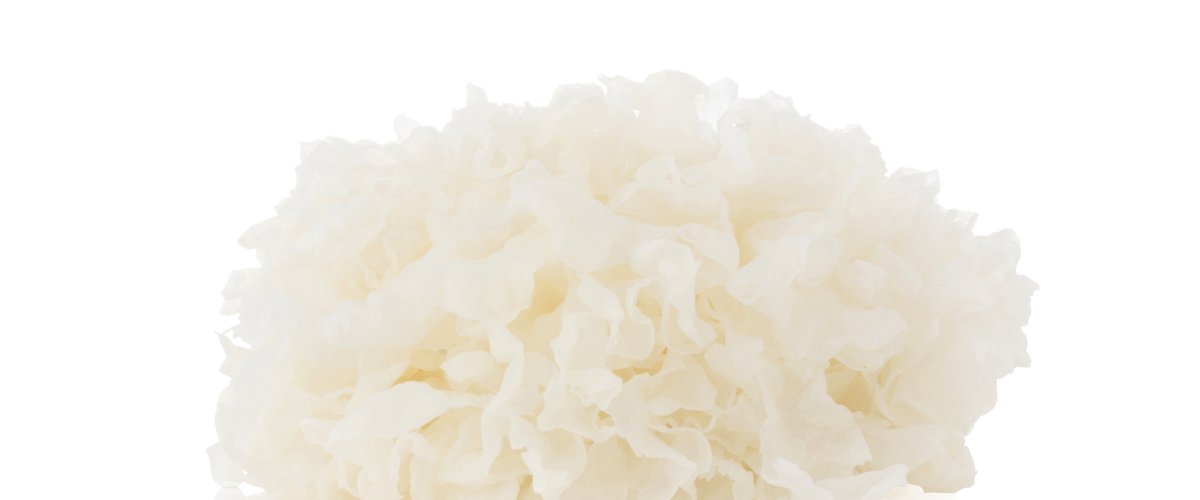Tremella Fucicformis
Further designations: Silberohr, White Fungus, Silver Ear, Snow Fungus, Shirokikurage, Hamumokuji, Bai Mu Er, Yin Er
The silver ear already appeared in the first book of the Chinese herbal inventory "Shennong Ben Cao Jing" about 200 after Christ. The gel-like fungus was considered a particularly delicate food which was expensive and accessible only to the rich in ancient China.
In tropical and subtropical climate the silver ear grows mainly on mango wood. In most Asian countries, the mushrooms are grown on wood substrate and are marketed in dried form. Also in Germany, they are offered occasionally.
In Chinese cuisine, the fungi are usually used because of their slightly sweet taste in sweet soups and desserts with fruit, occasionally also as a beverage. For European taste it fits well in wok dishes with vegetables or clear soups. The majority of the dry matter of the silver ear consists of carbohydrates (almost 94%), in particular the mushroom-typical polysaccharides. By contrast, its protein content is relatively low (approximately 4.5%). As further biologically active substances the silver ear contains the vitamins B1, B2, niacin, vitamin C, calcium, phosphorus, sodium and potassium.
